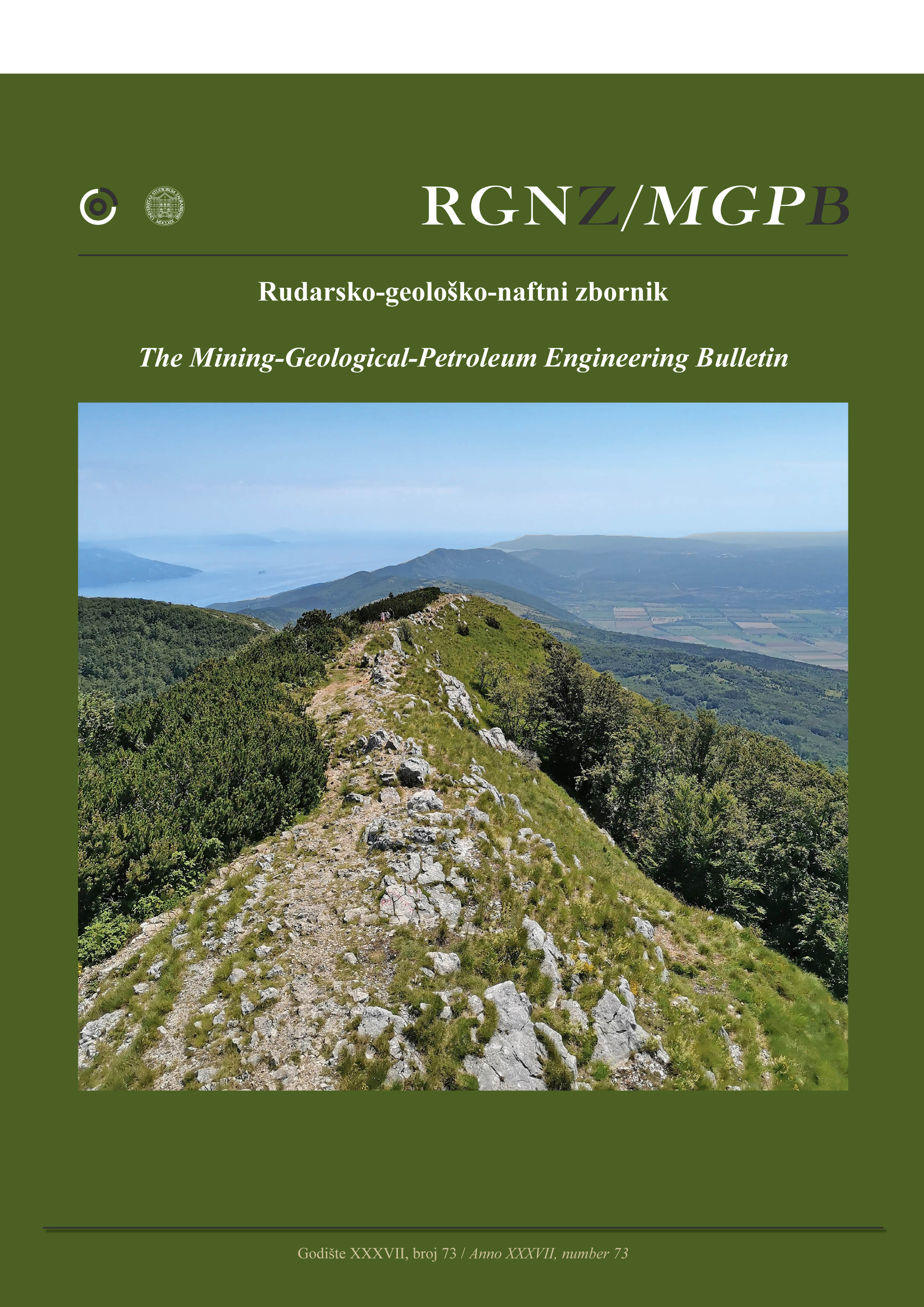Comparison of Porosity Prediction from Seismic Data in the F3 Block, Netherlands using Machine Learning
DOI:
https://doi.org/10.17794/rgn.2025.2.2Keywords:
machine learning, porosity, closed-loop, cycle-GANAbstract
Porosity is a crucial aspect of reservoir characterization. It can be estimated by measuring rock samples in the laboratory or through indirect methods based on wireline log data. However, both approaches are time-consuming and do not cover large areas. Therefore, this study integrates seismic data with well-logging data for porosity estimation, enabling the coverage of a larger area. Specifically, we estimate porosity in the F3 block of the Netherlands, where there is limited well-logging data available as labelled data. To address this issue, we employ machine learning, consisting of both an inversion generator and a forward generator, to estimate porosity from seismic data. The inversion generator facilitates the process of converting seismic data into porosity, while the forward generator enables forward modelling, transforming porosity data back into seismic data. This forward generator incorporates geophysical knowledge to mitigate the limited amount of labelled data during the training process. Both generators utilize a convolutional neural network-gated recurrent unit network (CNN-GRU). Additionally, various training schemes, such as closed-loop and cycle-GAN (Cycle-Generative Adversarial Network), were employed in this research and compared with an open-loop approach. The data from the F3 block consists of six post-stack seismic lines with an inline spacing of 40 meters and three wells. Data from two wells (F03-4 and F02-1) were used for training, while one well (F06-1) was used for testing. The results indicate that the cycle-GAN produces the most accurate porosity estimates, with a mean square error (MSE) of 0.603 and a Pearson correlation coefficient (PCC) of 0.713. The cycle-GAN utilizes cycle-consistent loss to enhance parameter updates and employs a discriminator to facilitate competitive learning with the generator, thereby improving accuracy. This demonstrates that cycle-GAN can achieve more accurate porosity estimation in locations with insufficient labelled or well-logging data compared to open-loop and closed-loop schemes. However, cycle-GAN requires more computational time than the other methods due to the need to train multiple networks. Nonetheless, this additional training time is justified by the improvement in PCC.
Downloads
Published
Issue
Section
License
Copyright (c) 2024 Urip Nurwijayanto Prabowo, Sudarmaji Sudarmaji, Jarot Setyowiyoto, Sismanto Sismanto

This work is licensed under a Creative Commons Attribution 4.0 International License.
Creative Commons-BY
Authors who publish with this journal agree to the following terms:
In agreeing this form, you certify that:
- You read the ethical codex of the RGN zbornik available at journal web.
- You submitted work is your original work, and has not previously been published and does not include any form of plagiarism.
- You own copyright in the submitted work, and are therefore permitted to assign the licence to publish to RGN zbornik.
- Your submitted work contains no violation of any existing copyright or other third party right or any material of an obscene, libellous or otherwise unlawful nature.
- You have obtained permission for and acknowledged the source of any illustrations, diagrams or other material included in the work of which you are not the copyright owner.
- You have taken due care to ensure the accuracy of the work, and that, to the best of your knowledge, there are no false statements made within it.
- All co-authors of this submitted work are aware of, and in agreement with, the terms of this licence and that the submitted manuscript has been approved by these authors.
Publication licence
You retain copyright in your submitted work, according to journal license policy (CC-BY). By signing this form you agree that RGN zbornik may publish it under the publication licence. In summary the licence allows the following:
Anyone is free:
- To copy, distribute, display, and perform the work.
- To make derivative works.
Under the following conditions:
- The original author must always be given credit.
- The work may not be used for commercial purposes.
- If the work is altered, transformed, or built upon, the resulting work may only be distributed under a licence identical to this one.
Exceptions to the licence
In addition to publishing the work printed under the above licence, RGN zbornik will also enable the work to be visible online.
The journal editorial can change the licence rules anytime but it cannot retroactively restrict author(s) rights.


